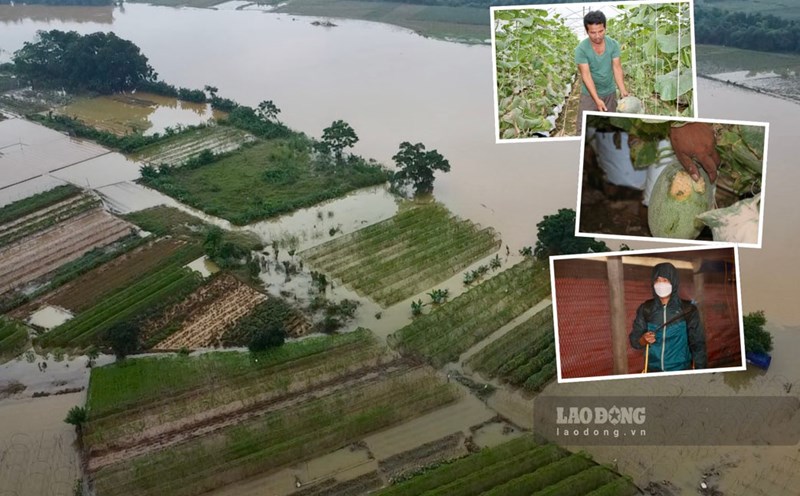The latest typhoon news on the morning of July 7 said that Typhoon Today has headed north towards the Taiwan Strait (China) after making landfall along the southwest coast on the night of July 6.
Typhoon Today (Storm No. 2 in the East Sea) has weakened significantly since making landfall and is expected to make landfall in eastern China this weekend.
"The path of the storm is very rare. The entire of Taiwan (China) will be affected by consecutive winds and rain," warned Taiwanese leader Lai Ching-te.
Taiwan (China) is regularly hit by typhoons but typhoons often make landfall along the east coast with many mountains and sparsely populated towards the Pacific Ocean.
Data from Taiwanese (Chinese) officials shows that more than half a million homes have been cut off and more than 300 domestic and international flights have been canceled. The island's north-south high-speed railway has also been reduced.
The Taiwan Fire Agency (China) said that 1 person died from a fallen tree while driving and 1 person died after the ventilator failed to work due to a power outage.
During Typhoon Today, record winds of about 220 km/h were recorded in Yunnan County, southwestern Taiwan (China), while more than 700 trees and street signs were blown away across the island's western cities and towns.
Zhejiang Province, eastern China has activated an emergency response to Typhoon leo leo leo since the morning of July 6. According to the storm forecast bulletin of the Zhejiang Provincial Meteorological Observatory, on July 7, the storm will enter the East China Sea and will most likely make landfall in the afternoon and night of July 8 along coastal areas from central and southern Zhejiang to northern Fujian.
China's National Weather Service also extended a yellow alert (3rd highest level) for Typhoon Today on July 6 as the storm is expected to bring strong winds and heavy rain to the southern parts of the country.
The latest storm information from the Philippine Atmospheric, Geophysical and Astronomical Services Administration (PAGASA) said that Typhoon Today (called Bising in the Philippines) left the Philippine Forecast Area (PAR) on the morning of July 7.
In other developments, PAGASA's latest typhoon forecast says that there will be 10 to 18 more typhoons in the Philippines this year and these storms will not be as strong as last year.
"Last year, from October to November, there were 6 consecutive storms and super typhoons over the course of a month. This year, we do not expect a similar scenario to repeat," said PAGASA Deputy Director Marcelino Villafuerte II.
However, he noted that the public cannot be subjective about upcoming storms as they may bring heavy rain and strong winds, causing great damage.
Villafuerte also pointed out that stronger typhoons making landfall in the Philippines from October to November 2024 are formed in the context of the La Nina phenomenon, when "the waters around the Philippines have warmer sea surface temperatures, which promote typhoon formation".
Typhoons Julian, Kristine, Leon, Marce, Pepito, Nika and Ofel making landfall in the Philippines from October to November 2024 have caused huge damage. PAGASA has declared La Nina end in April 2025.












